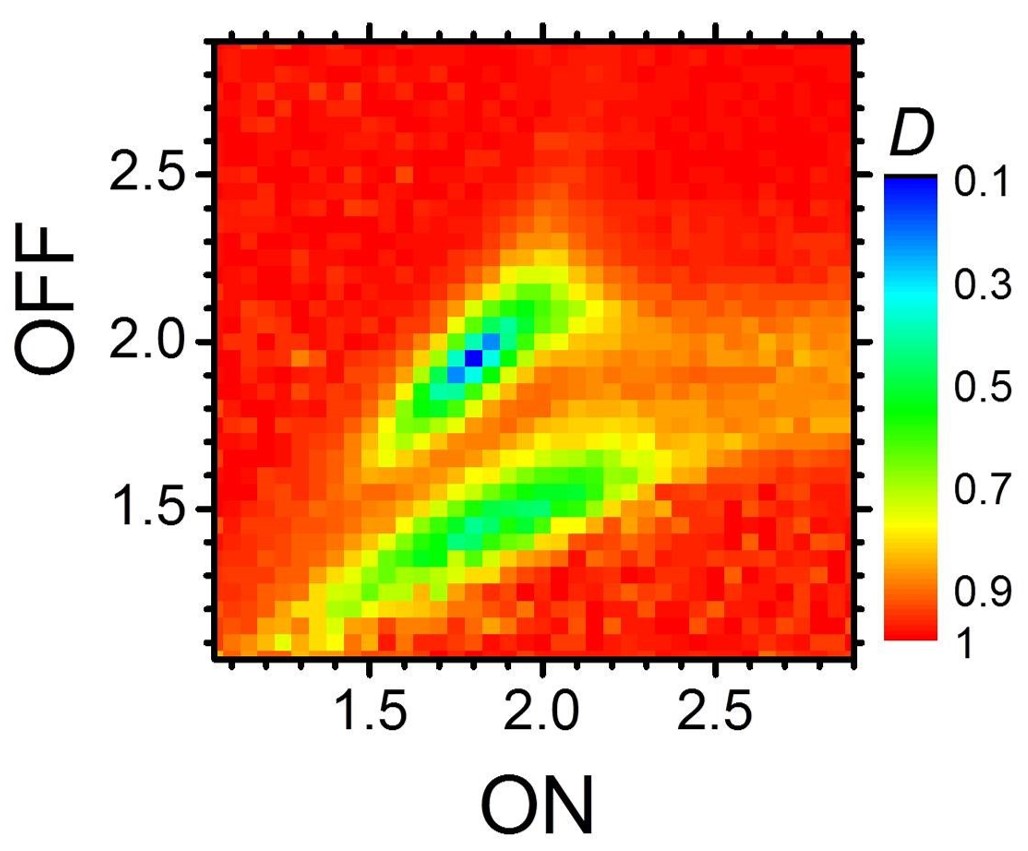Blinking of nano-emitters: getting rid of arbitrary choices
![]()
Julien Houel, Gilles Ledoux, David Amans, Antoine Aubret, Christophe Dujardin and Florian Kulzer (Luminescence team), with colleague from IPNL and l'ESPCI have published an article entitled "Autocorrelation analysis for the unbiased determination of power-law exponents in single-quantum-dot blinking" in the journal ACS NANO.
|
Colloidal quantum dots are nano-emitters which suffer from blinking: their fluorescence is a succession of bright states (ON) followed by dim states (OFF). The probability distribution functions of ON and OFF durations obey power-laws: The emission is non-ergodic. Methods have been developed to analyze and understand blinking, but they are user-biased, mostly due to the ergodicity breaking. As a consequence, the power-law exponent values depend on arbitrary choices made in the data processing. Thus, the mechanisms responsible for blinking cannot be accurately identified. In this article, the authors present the first unbiased analysis method for blinking. It relies on the simultaneous recording of the luminescence of 450 single quantum dots with a home-build wide-field microscope (NanOpTec), coupled to a fast ebCMOS prototype camera with single photon sensitivity (IPNL). |
 |
The 450 intensity autocorrelation functions extracted are then compared to simulations with a statistical test. It allows to identity with a 3% precision the power-law blinking exponents of the ON and OFF duration distributions (see image). The method is robust against noise: It will become possible to identify blinking power-law.
16/01/2015


















